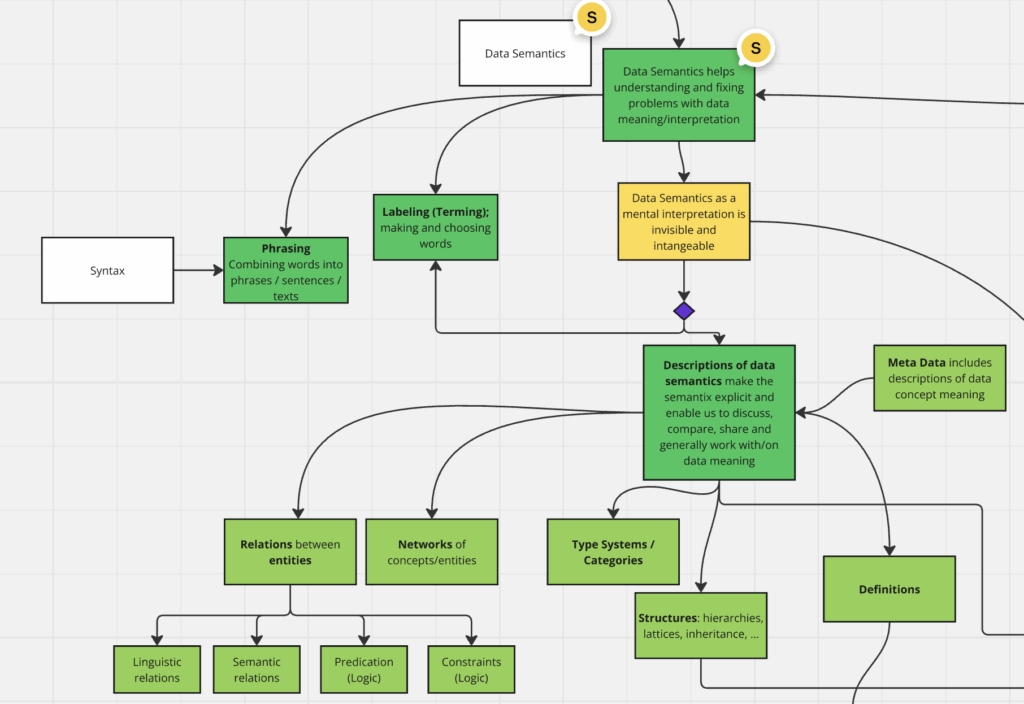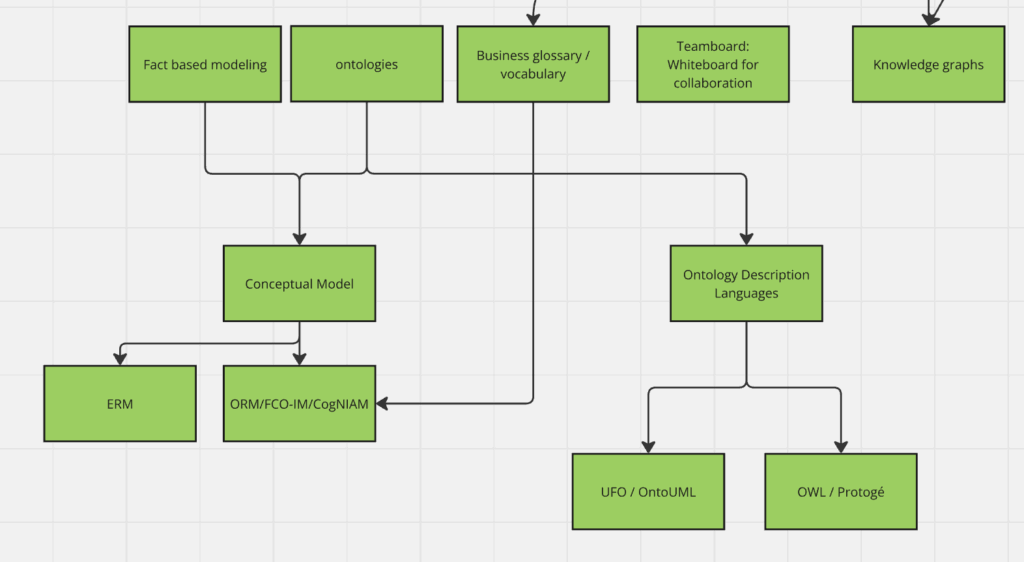Problem: Need to know the right label and/or interpretation of a term / data concept.
Solution: use some form of concept catalogue: dictionary, glossary, vocabulary; a list of terms (words; labels) and references to descriptions (in whatever form) of their meanings. These can include many forms of meaning descriptions, including definitions, ontologies, and conceptual models of many sorts.
Many complications can arise, boiling down to the question which term (label of a concept) should carry which interpretation for a particular instance of use of that term; often, a number of interpretations are possible, or alternatively, no sufficiently well-described interpretation is known. Basic forms of complication are:
- Homonyms
- Synonyms
- Ambiguity
- Lack of clarity
For correct interpretation to be possible, the right meaning of the term needs to be or become known. This typically requires retrieval and/or selection of the correct interpretation (from a set of possibilities), typically the one intended by the ‘writer’ of the term. This can be an instance of a word or phrase in a text of some sort, or in a row of a table; it can also be a type (e.g. the name of a colomn in a table). Homonymy and synonymy complicate this by offering more than one possible interpretation of the same term (homonyms) or more than one possible terms that can be used as labels for a single concept/interpretation (synonyms). If some term or phrase can be interpreted in more than one way, it is ambiguous; solving this is called disambiguation.
Lack of clarity may be caused by ambiguity, but apart from that it may also be caused by lack of detail or precision, or failing understandability in the description of the meaning of a term or phrase. Solving this requires clarification.
While meaning description, and comparison of meaning descriptions (for matching or selection of the right meaning) is an important part of dealing with data semantics, note that the labeling of concepts (choosing which term is used for them) is also key; it is the combination of the form (label) and the meaning (semantic description) that is needed, and both semantic description and labeling can be the cause to complications.

Many different ways exist to describe meaning, many of them requireing quite complex systems of description involving not one but many concepts/terms, related in conceptual networks or hierarchies. Above, some main principles used in semantic description (often names semantic modelling) are presented. Combinations of these main principles can lead to a range of artifacts that aim to describe data semantics. Some main types of these are covered below:

Geef een reactie
Je moet ingelogd zijn op om een reactie te plaatsen.